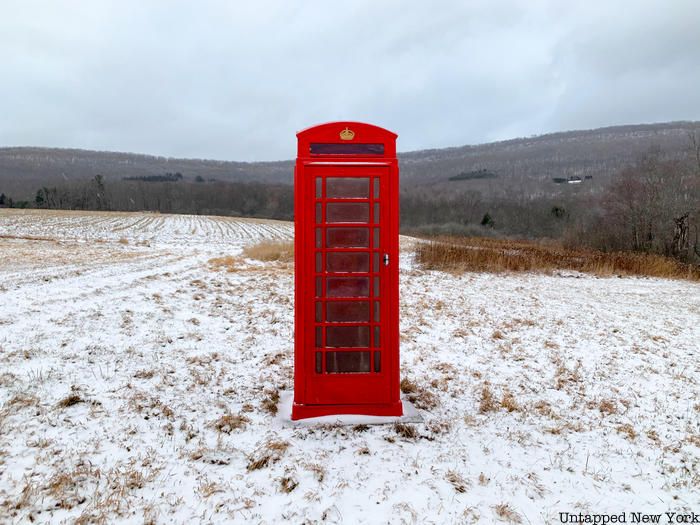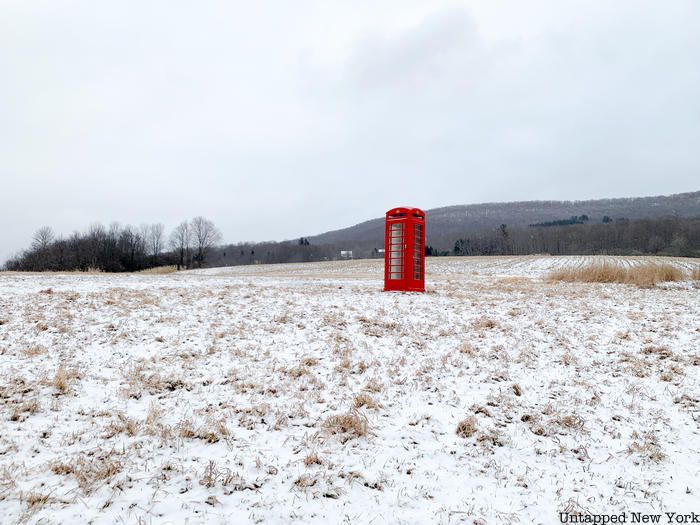Artist-Led Tour of "ENCORE" Photo Exhibit w/ Mark S. Kornbluth
Join photographer Mark S. Kornbluth for a visual exploration of NYC's Broadway theaters at Cavalier Galleries!


Looking like a portal to another dimension, a British red phone booth sits in the middle of rolling hills in the Catskills about .twenty minutes from Bellyare ski mountain. One of our contributors recently shared with us his photographs of the sight, which has been located here for some years in New Kingston off the Dunraven-New Kingston Road. New Kingston is a hamlet of 158 people, listed on the State and National Registers for Historic Places.

The reader tells the red phone booth is located on a farm located near where he was staying for the holidays and he stumbled upon it on a walk through the woods. It’s not open to the public and there are trespassing signs on the property, with the name of the landowner. A search for information about the red phone booth yields photographs taken by two separate people in 2012 and 2016, but nothing else. Then the owner of the farm and phone booth provided us with the answer.
He writes, “I am originally from the UK. When I read that they were going to do away with the phone booth, I decided I wanted one, and put it on my “list of things to get one day…” My wife found the list and had it delivered to our house for my birthday 18 years ago. We put it in our field which is still farmed for corn (the farmer just drives around it). There are now kids in New Kingston who can say it has been there ‘all their lives’!”

New Kingston itself is small, but has a noble Revolutionary War history. United States Founding Father Robert Livingston, whose homes were burned by the British during the war (including Clermont, in the Hudson Valley) bought 5,000 acres of the land here to donate to those who had lost their homes in the Kingston area due to the war. From settlement to today, the industry of the area has been farming (dairy and cauliflower).
The British red telephone box, once a ubiquitous presence on the streets of England, were phased out and repurposed in many unique ways. Nostalgia about the design, created by Sir Giles Gilbert Scott who also designed such places like Battersea Power Station and the Liverpool Cathedral, led to their resurrection.
According to a 2018 article in The New York Times, one Briton named Tony Inglis’ foresight is partially responsible for their return in new forms: Inglis’ “engineering and transport company got the job to remove phone boxes from the streets and auction them off. But he ended up buying hundreds of them himself, with the idea of renovating and selling them…Mr. Inglis said he had heard the calls to preserve the kiosks and had seen how some of them were listed as historic buildings. He said he had been convinced that he could make a business of restoring them, and he was soon proved right.” In England, they have been repurposed as cell phone repair kiosks, defibrillator kiosks in rural areas, and seen in art installations. Looks like one of them made it over to the Catskill mountains.
Next, check out our guide to this area of the Catskills!
Subscribe to our newsletter